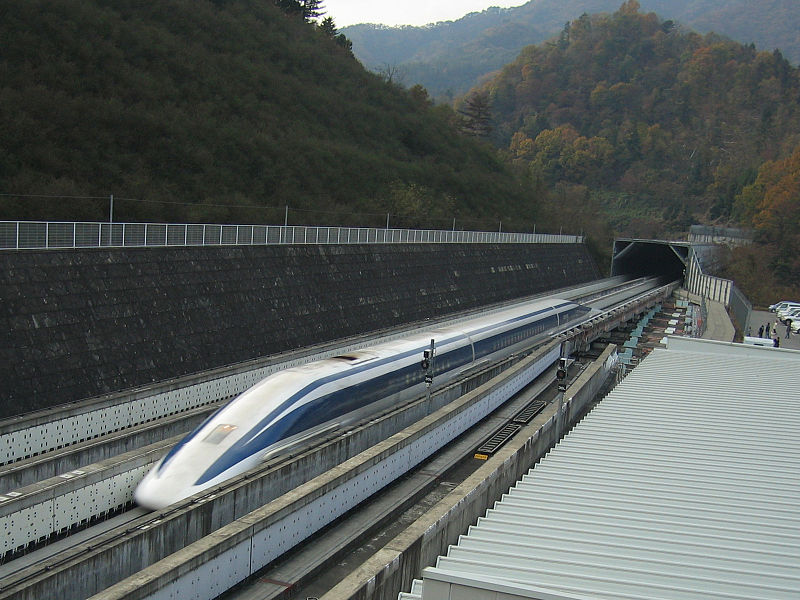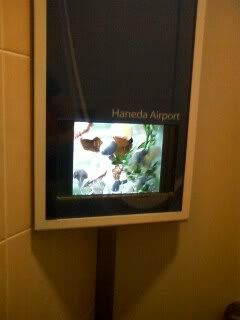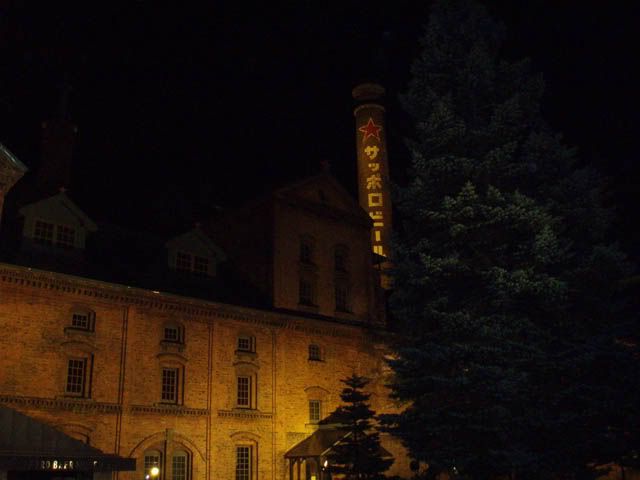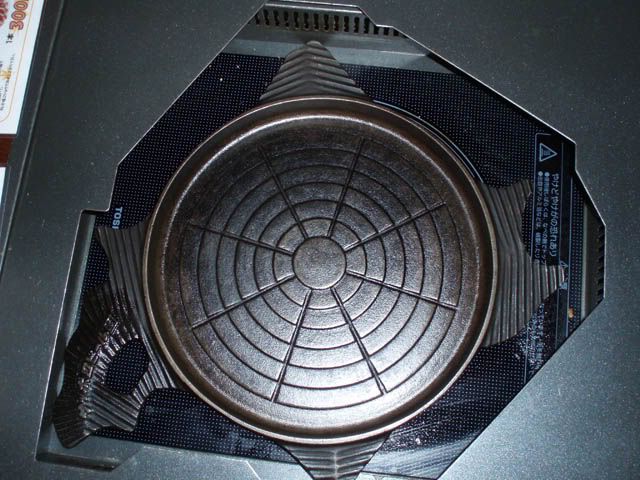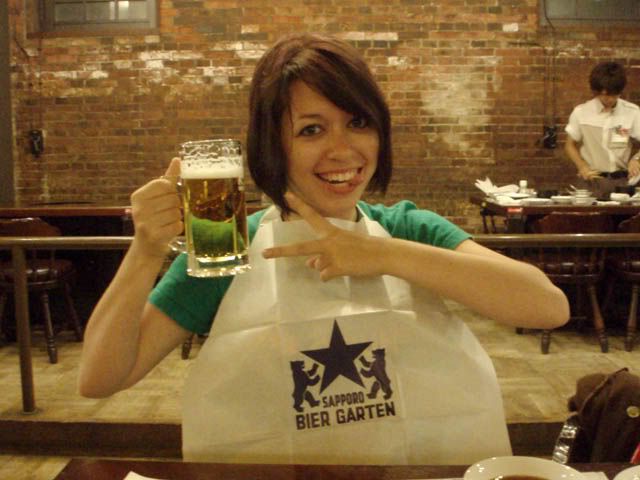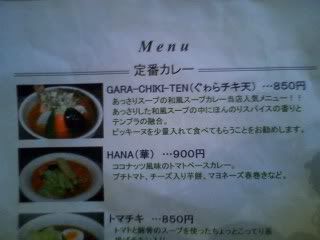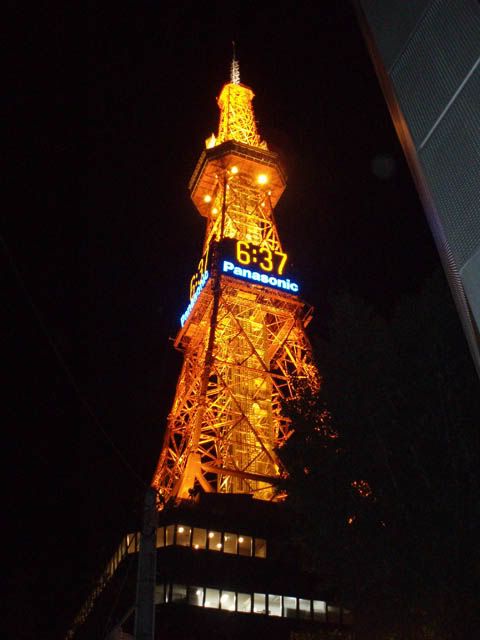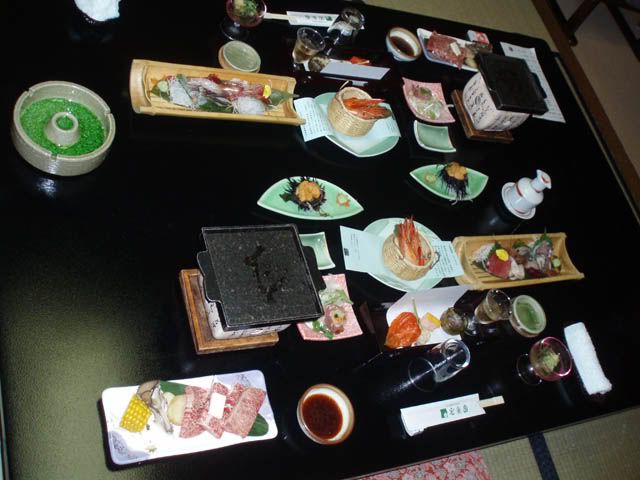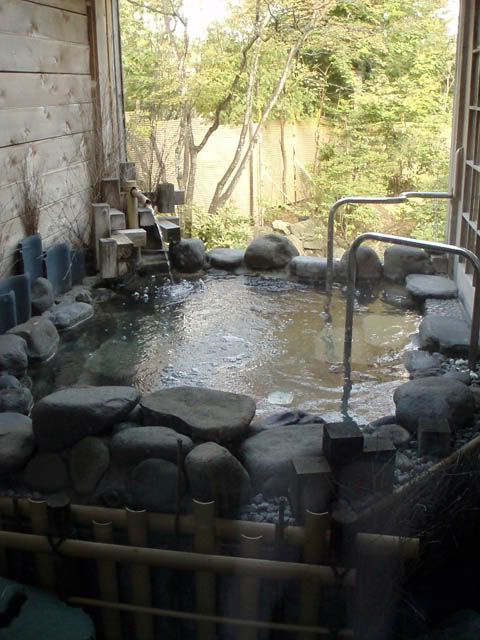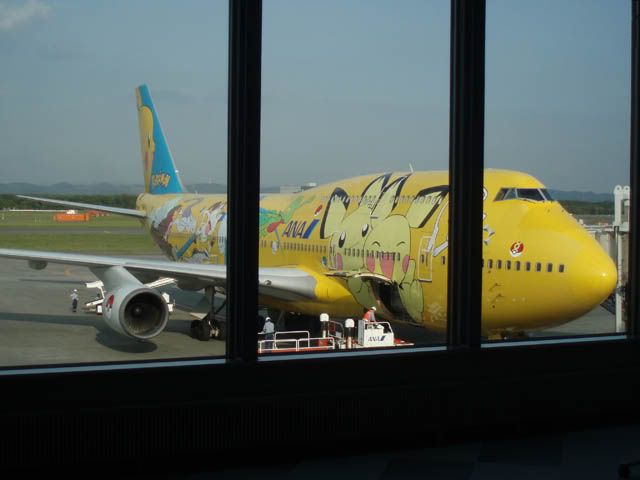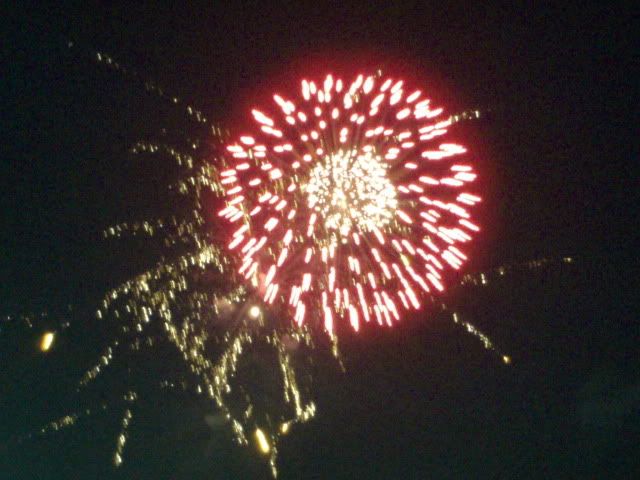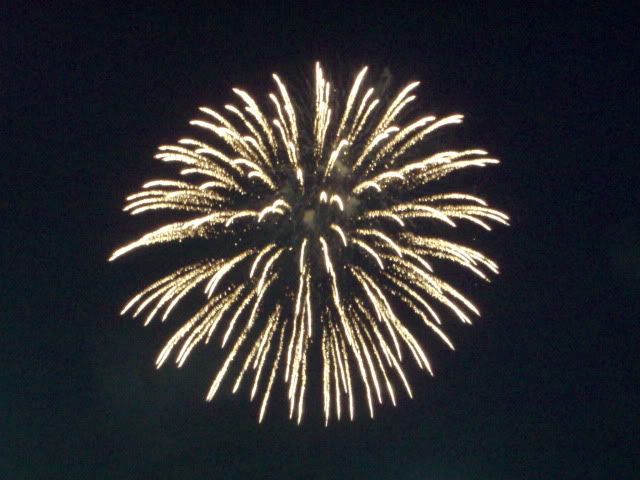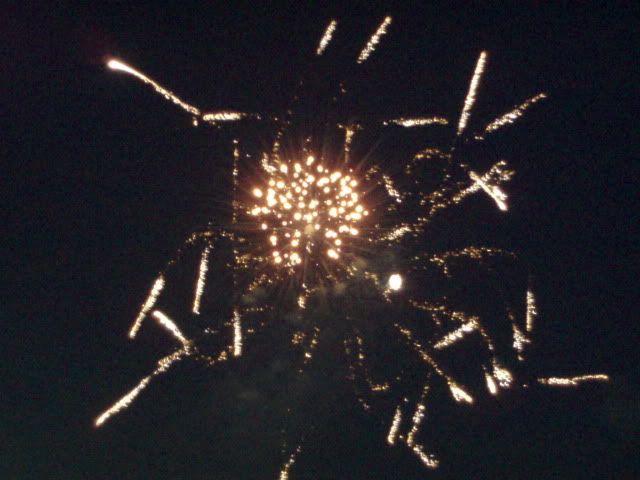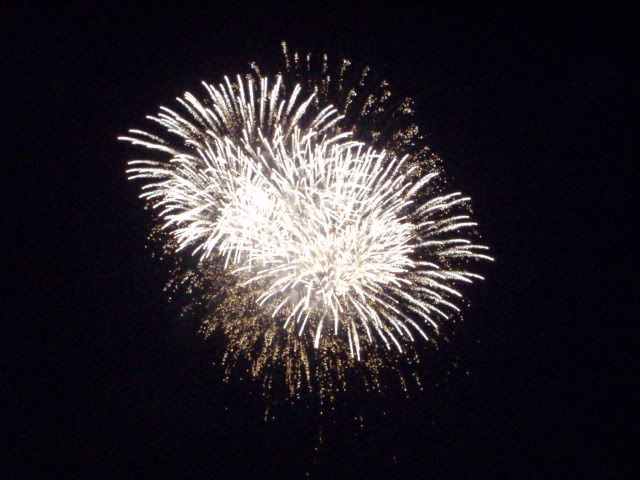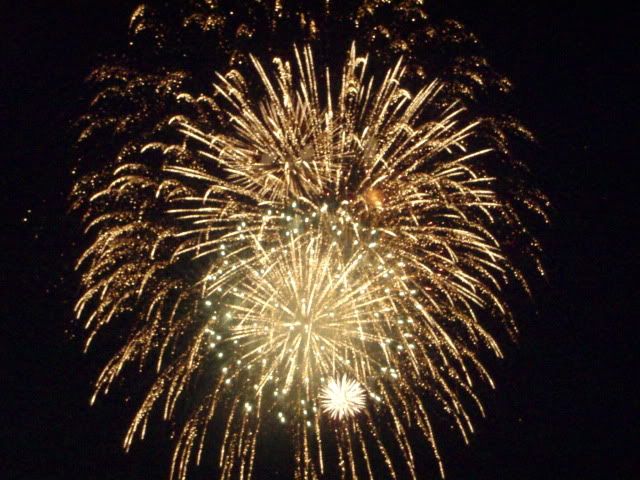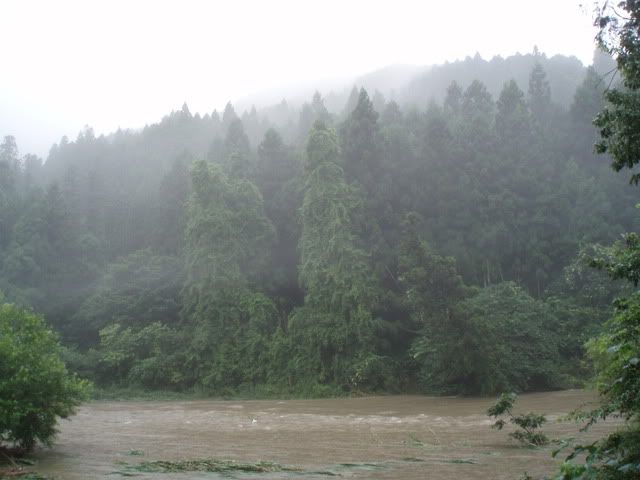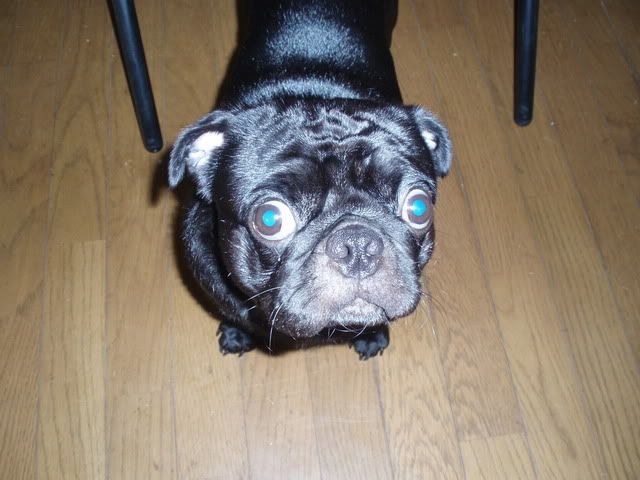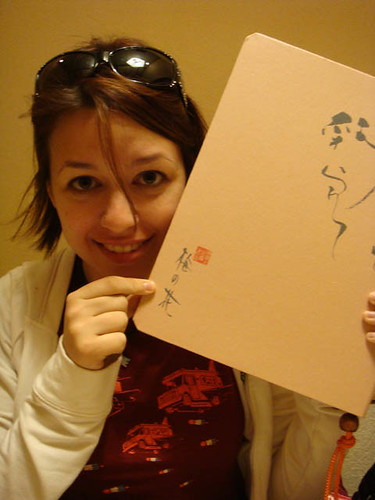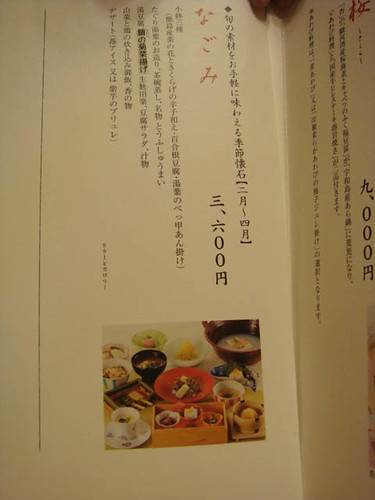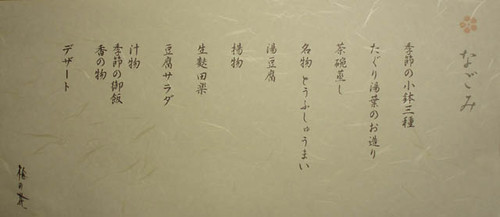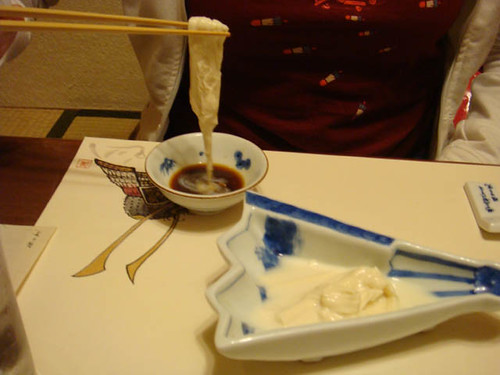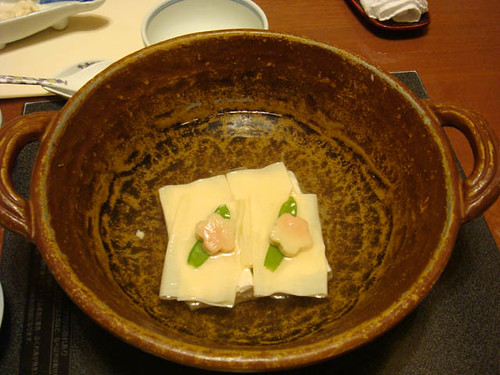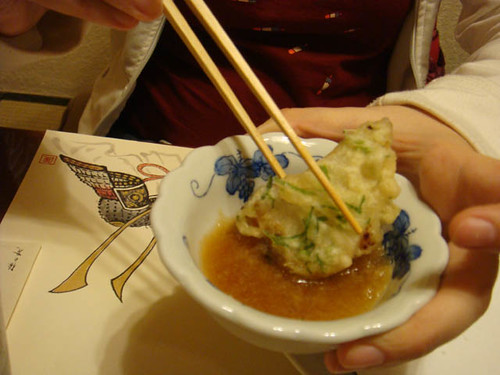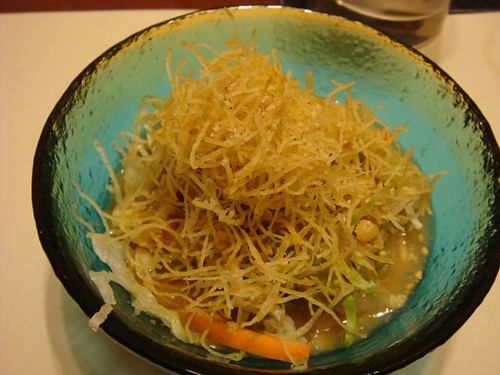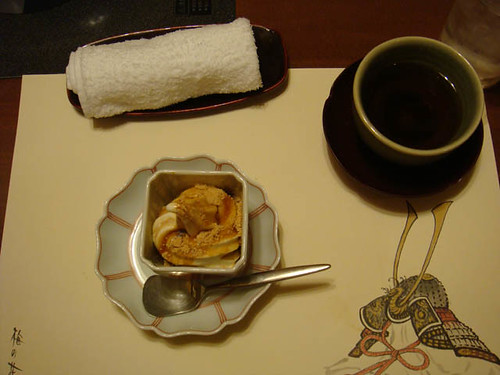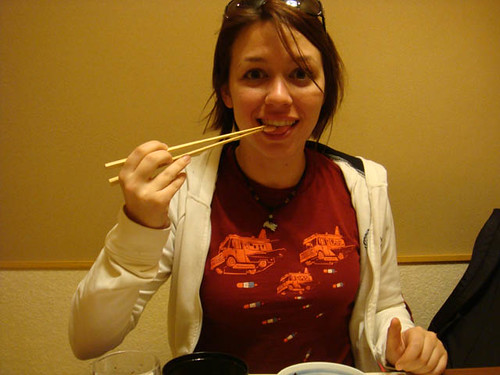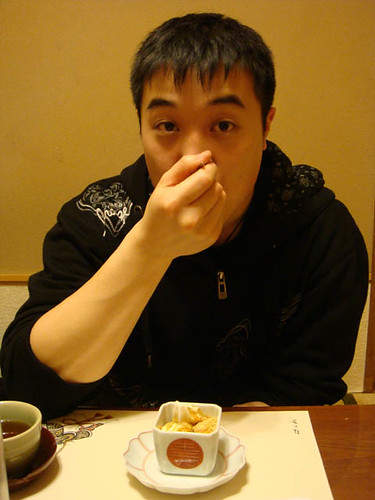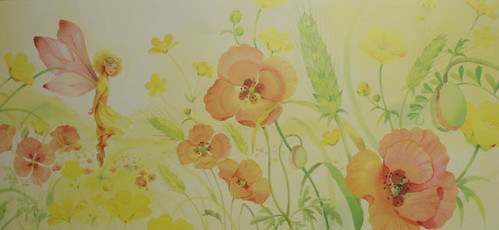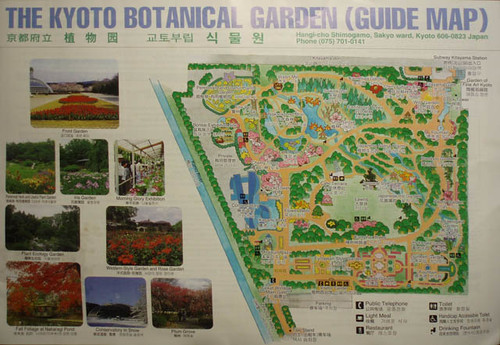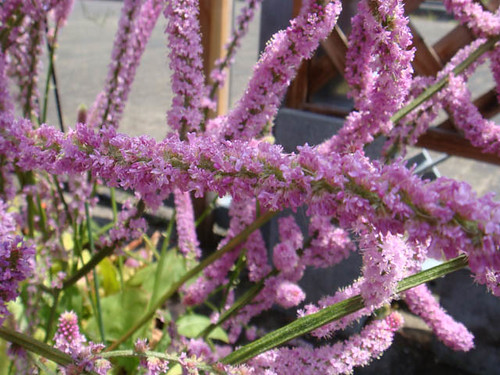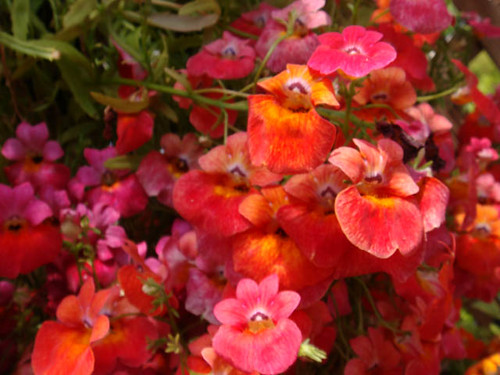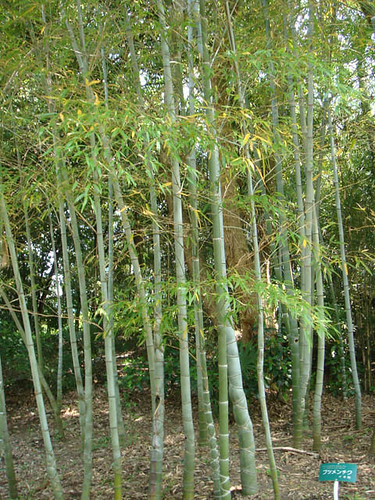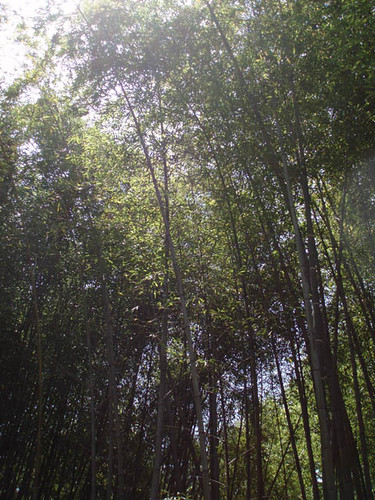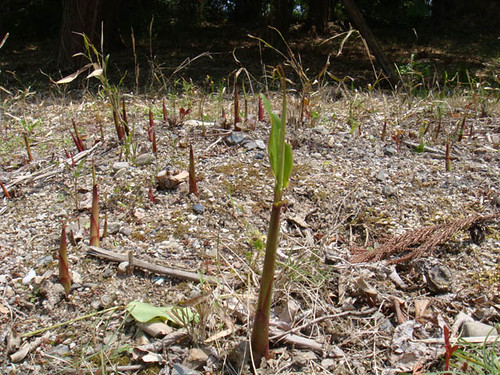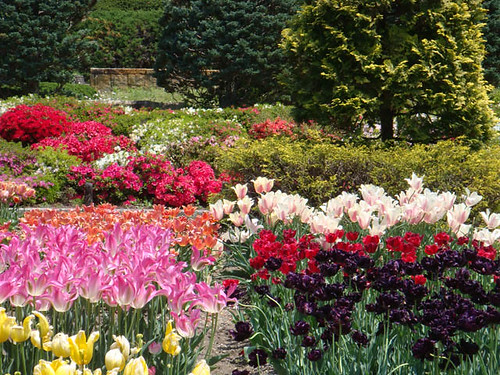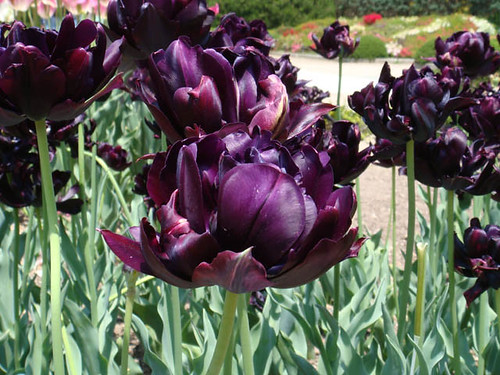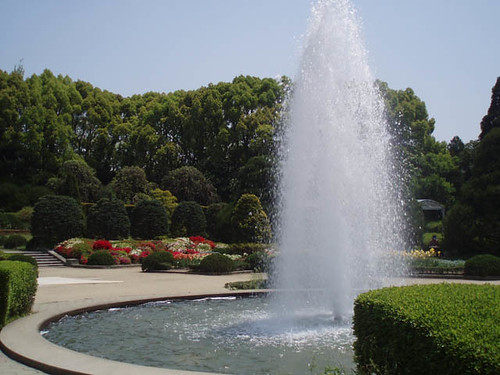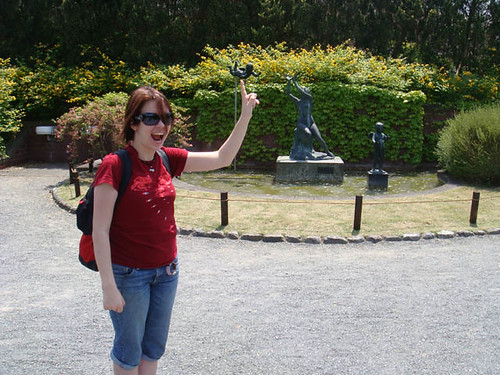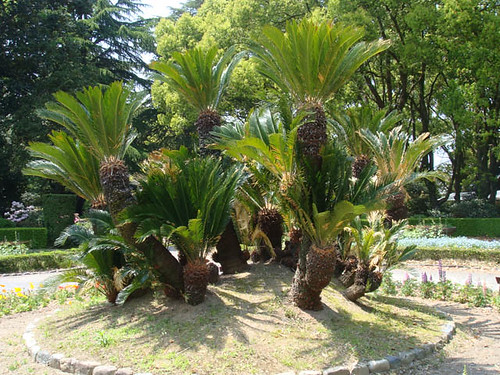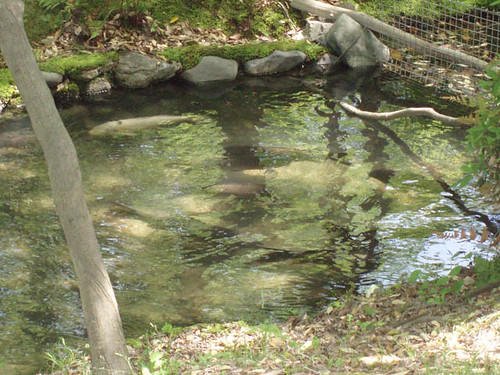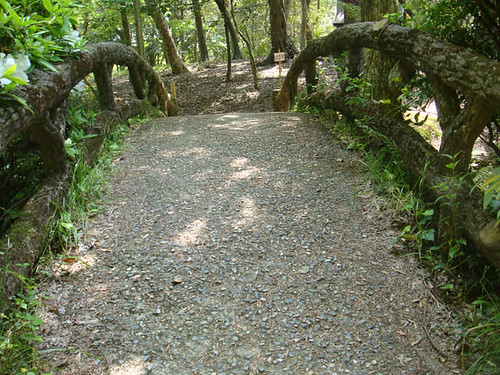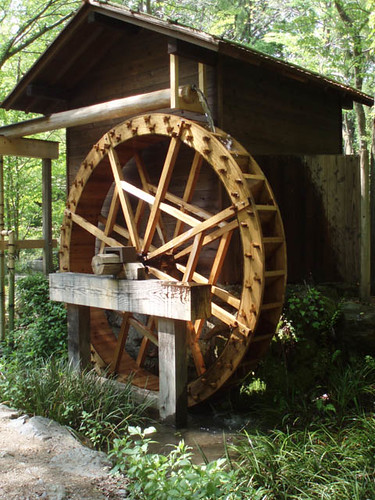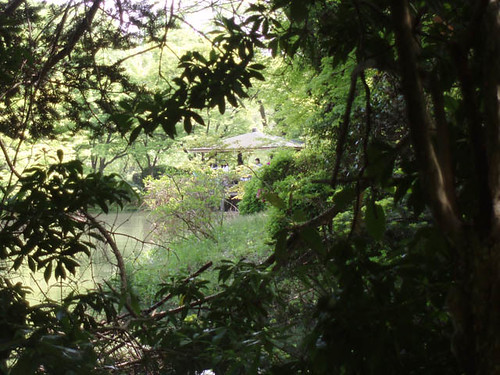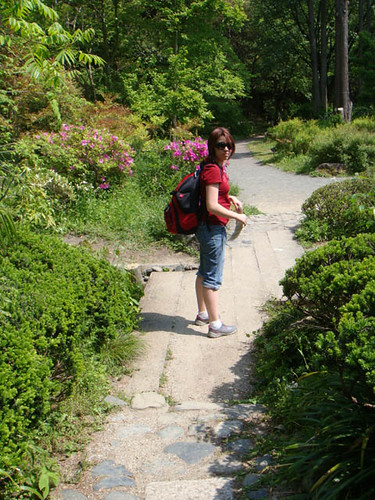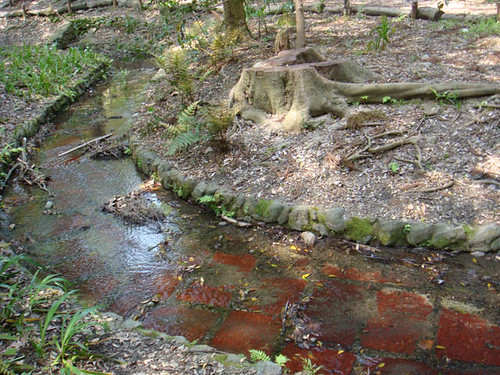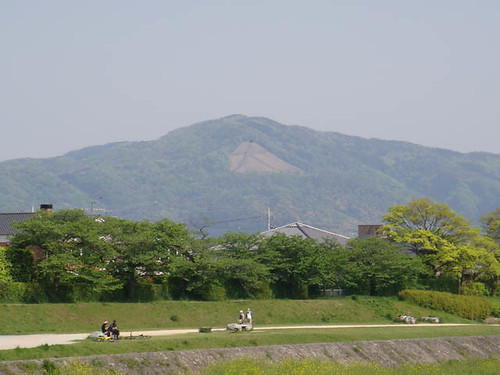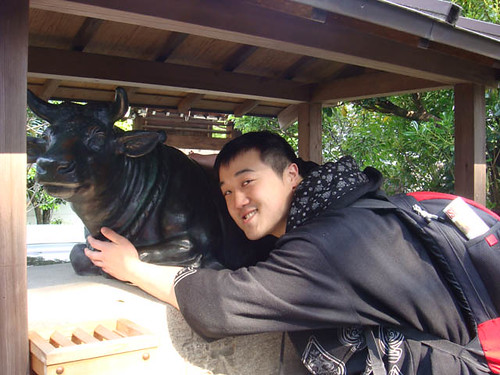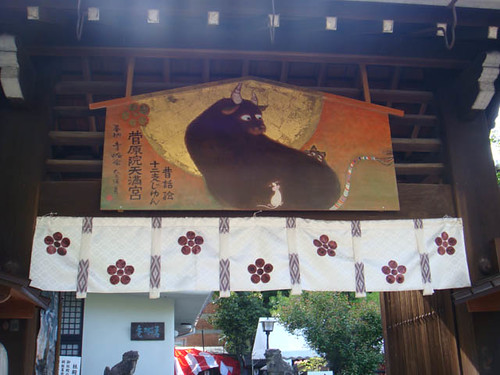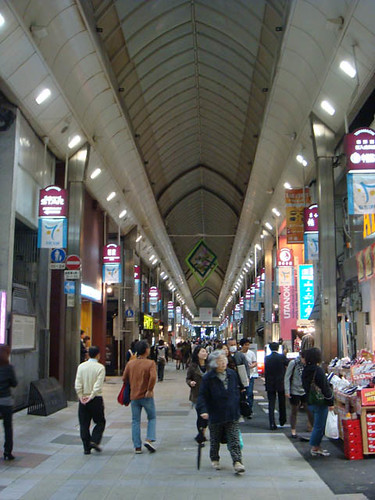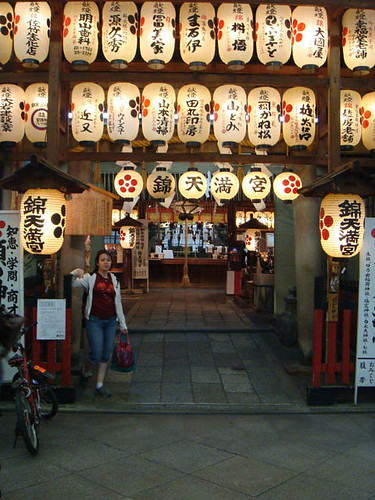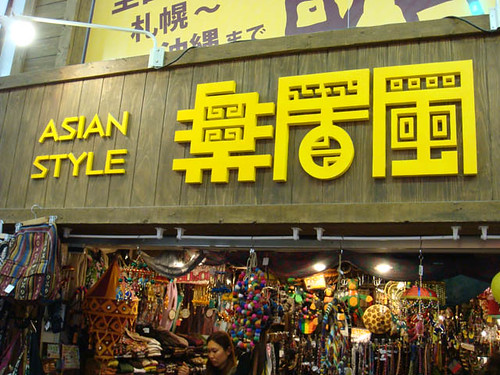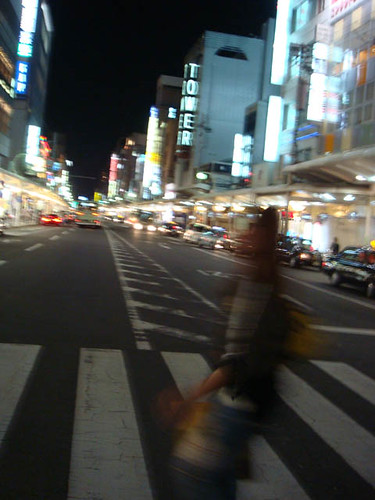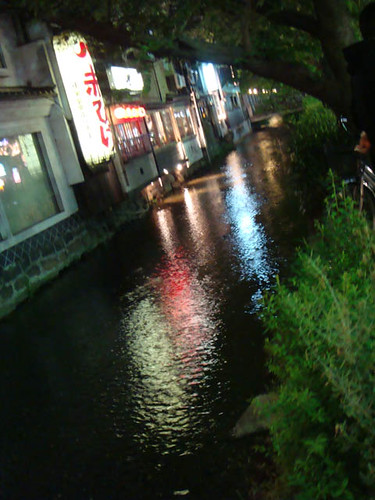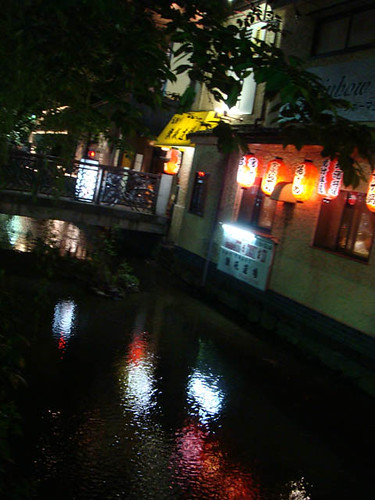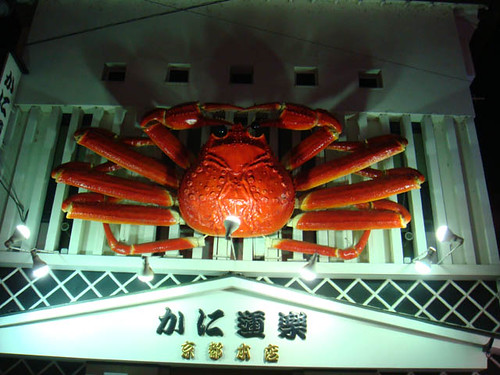After a long trek around town we figured we'd earned a nice dinner. Aside from transportation, this was the largest expense during the trip. I figured it was a worthy expense, since I wanted to share this restaurant with Moo Cow.
梅の花 (Ume no Hana)
A restaurant that specializes in tofu, this chain is a great find. When you walk in, the friendly staff will greet you and direct you towards a private room where you'll be eating. It's a traditional Japanese-style interior so you'll be expected to take off your shoes at the door. Keep that in mind when choosing your footwear. Some of the rooms will have traditional setups without the sunken floor beneath the table, while others have it. It appears to depend on the restaurant, as each has slightly different decor.
First they'll offer you warm hand towels and ask what you'd like to order. The courses begin at ¥3600 for dinner and go up to ¥7000 or a little more if you choose from the seasonal courses. You can also order items a la carte, but the course menus are always the best deal in terms of variety for price.
We tried the nagomi, a standard course menu that costs ¥3600 and has 12 courses. Once you order, they bring you a small sheet copy of the menu. Again, this is only in Japanese, but it's still a fun little souvenir if you like food. They also explain each course as it comes to your table. From here on out I'll only be talking about the nagomi, since it's the course we had.
The first course was a trio of tofus. We were so hungry we forgot to take a photo before devouring it. Oops. One in particular caught my interest though, which was a ribbon-like tofu that tasted smoother than any tofu I've had anywhere else. As a whole the presentation was fantastic, with all three in small dishes served inside a presentation box. Beautiful and delicious.
Much to my excitement, the "ribbon-tofu" made a reappearance for our second course. As you can see, it was served in a lovely fan-shaped dish. The dipping sauce was soy-based and suited it perfectly.
At this point they brought one of our next courses early so it could simmer. It was mineral water and tofu simmered together to make a soup. Moo Cow noticed that the mineral water caused a breakdown of the tofu that would never happen with tap or bottled water. They placed this pot on the burner in the center of the table. I'd imagine some restaurants also bring burners because they aren't equipped with built-in ones.
The third course was one of my favorite Japanese dishes...茶碗蒸し (chawanmushi), or steamed egg pudding. It's a savory pudding with seafood, mushrooms and other items in it. This one of course had some kind of dumpling in the middle. The dumpling was no doubt made of soy, but it had the texture of the dango I love so much. Despite the hot weather I ate this with much happiness.
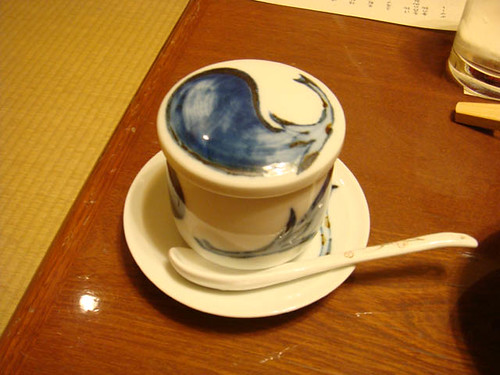
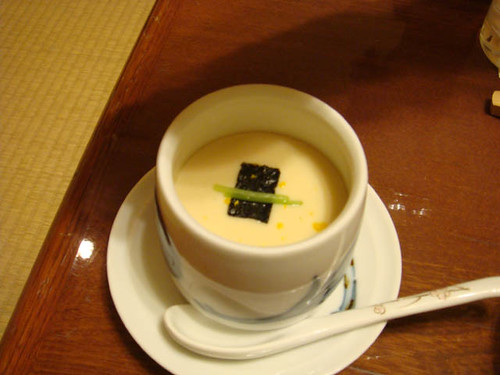
Following that was another course we forgot to photograph: 名物とうふしゅうまい(tofu shumai), or tofu dumpling. If you're familiar with gyoza, it's kind of like that but usually round and made with shrimp. These were served in wicker baskets usually used for Dim Sum. They contained shrimp (read: NOT vegetarian) and I believe the tofu was in the noodle wrapping, which was different from the usual because instead of being a large sheet noodle wrapped around the meaty center, it had shredded noodle pieces, as if the dumpling was rolled in it instead. Because of this it has a nice aesthetic. Fabulous dumplings, they were. I wish we'd remembered to take photos.
When they came to collect the plates from that course, they told us the soup was ready to eat. It was delicious. They told us we'd know when it was ready because the soup would become milky white. When they'd initially brought the soup they also gave us instructions that were in both Japanese and I believe English as well, although if I remember correctly the English was questionable. Nonetheless it was understandable and helpful. The soup was eaten mixed with soy sauce.
Next came a fish tempura. The batter was light, crunchy and not oily, while the fish was perfectly cooked so it fell apart in our mouths. We suspect the tofu in this course was in the tempura batter. Although at this point I was starting to question the use of tofu in every course. The tempura sauce for dipping also came with ground daikon to be mixed in, which you can see in the photo.
Perhaps the whole reason I remembered the restaurant from my previous trip was because of the next course. It also influenced my menu decision, as it involved this course. I don't know what these are, but Moo Cow said they're a common Chinese food I could buy in the US at an Asian market, although I wouldn't find the sauce. As you can see, I was too impatient to wait for the photo before nibbling on the corner of one...
A Japanese course menu wouldn't be complete without some kind of salad, so next was the tofu salad. It came stacked as in the photos and with instructions to mix it well before eating (we thought that was kind of obvious). The sauce was an interesting tangy sauce, although not an unfamiliar one. I'm pretty sure I've had it on salads in Japanese restaurants in the US before.
The final three non-dessert courses were served together. Most traditional Japanese course menus will end with a rice course. This one also served miso and an array of what are called pickles here. Pickles in Japan include anything that's been pickled and cut into pieces; the name is not just reserved for pickled cucumbers. I think I liked the dark purple ones the best.
Finally, we had our choice of three desserts. The first was strawberry ice cream, the second was a soy ice cream with kinako (soy powder) and molasses on it, and we didn't hear the third one because we emphatically chose the second choice. We'd had this dessert before at an "American Sushi" restaurant (called California Roll Sushi in Azabu Juban) and it was phenomenal. It was worth trying a soy-based ice cream as well. It was served with a pot of hot tea. It wasn't green tea or barley tea, but we aren't sure *what* kind of tea it was.
And here's a better photos of the ice cream itself...
At this point you can sit and chat over tea for as long as you like. Since we hadn't made a reservation we didn't have the luxury of hours, but we enjoyed our food thoroughly. Here's a little proof, I suppose...
And Moo Cow enjoyed his ice cream. Not sure if this was before or after I told him it wasn't dairy.
As you leave, if you particularly enjoyed any part of your meal, you can pick up some "souvenirs" or just munchies from a display near the register to take home with you. My first trip we got a tofu cheesecake that was to die for. Keep in mind these will be nominally priced, yet they are completely worth the cost.
All in all, this restaurant has a great atmosphere, friendly staff and fabulous food. The presentations are well-thought out and take the flavor into consideration; I'd expect nothing less from a nice Japanese restaurant. The price-to-quality ratio is great. I think this restaurant falls into low-key business meals, inexpensive dates and family special occasions (my first trip was for Grandma's birthday). It is a tofu restaurant, however, it is not vegetarian in nature. Perhaps the courses aren't even pescetarian, I'm not sure. If you like tofu I recommend trying this restaurant, but if you're vegetarian you'll be a bit limited. Overall, I hope you try it if you have the chance.

